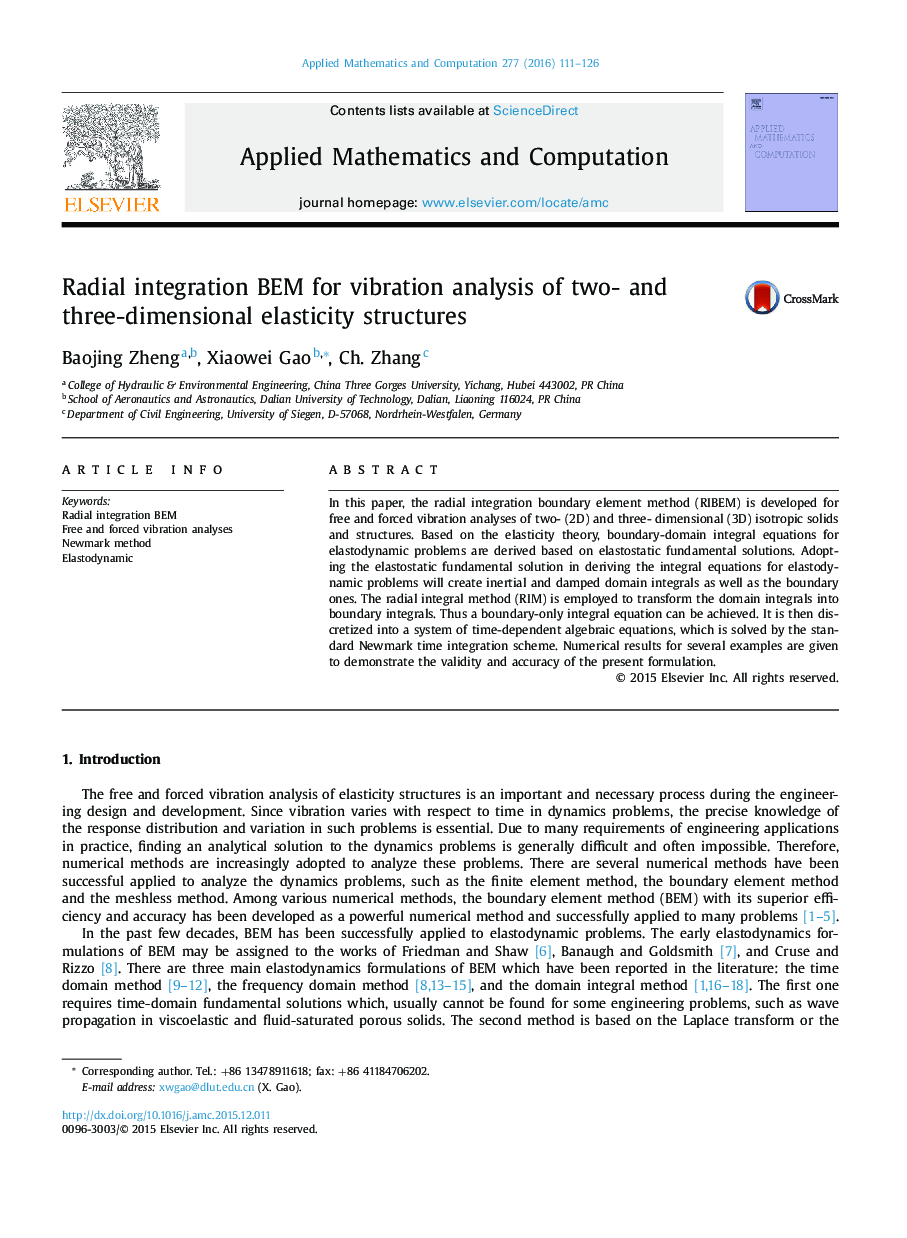| Article ID | Journal | Published Year | Pages | File Type |
|---|---|---|---|---|
| 4625909 | Applied Mathematics and Computation | 2016 | 16 Pages |
In this paper, the radial integration boundary element method (RIBEM) is developed for free and forced vibration analyses of two- (2D) and three- dimensional (3D) isotropic solids and structures. Based on the elasticity theory, boundary-domain integral equations for elastodynamic problems are derived based on elastostatic fundamental solutions. Adopting the elastostatic fundamental solution in deriving the integral equations for elastodynamic problems will create inertial and damped domain integrals as well as the boundary ones. The radial integral method (RIM) is employed to transform the domain integrals into boundary integrals. Thus a boundary-only integral equation can be achieved. It is then discretized into a system of time-dependent algebraic equations, which is solved by the standard Newmark time integration scheme. Numerical results for several examples are given to demonstrate the validity and accuracy of the present formulation.
